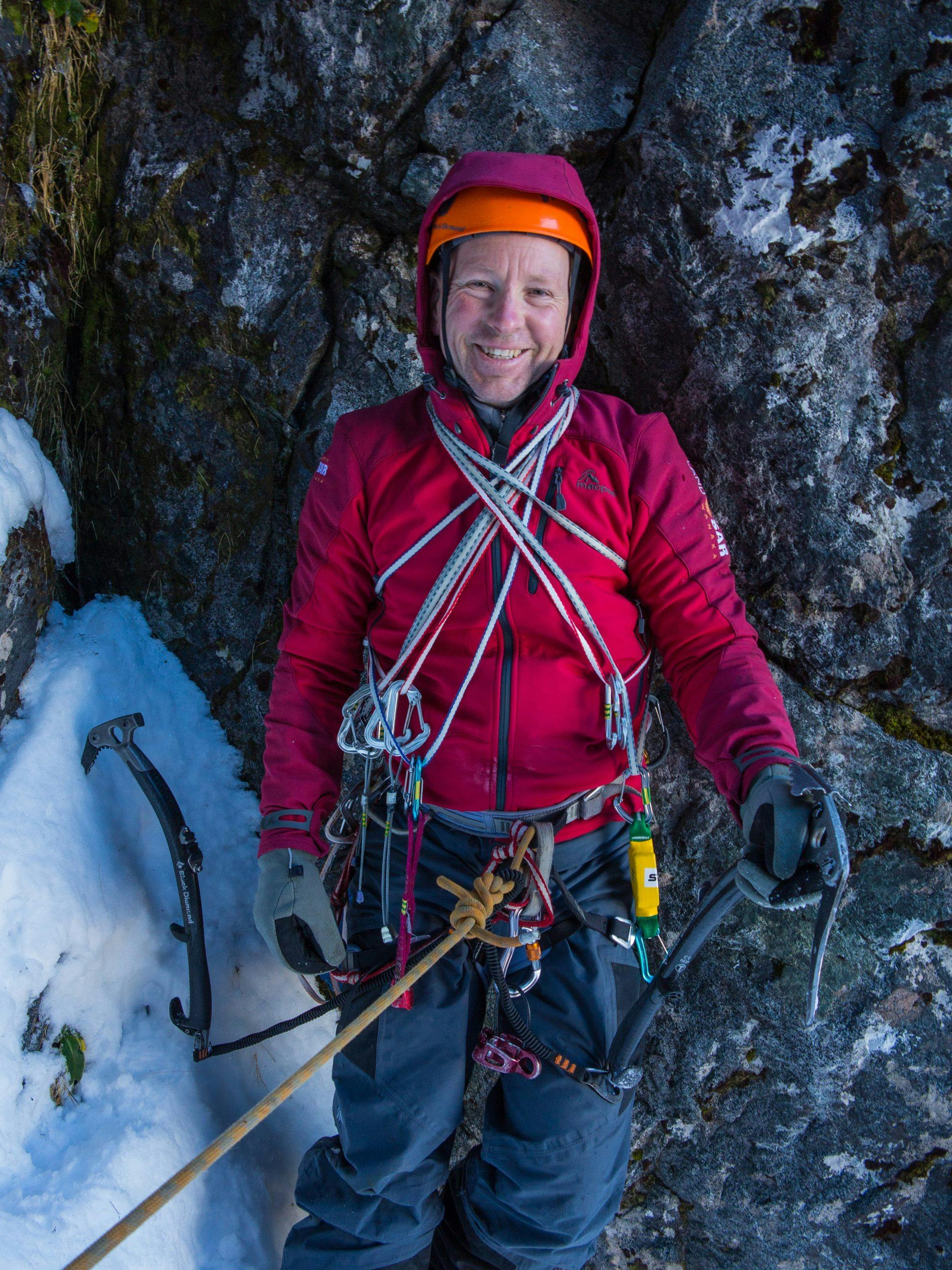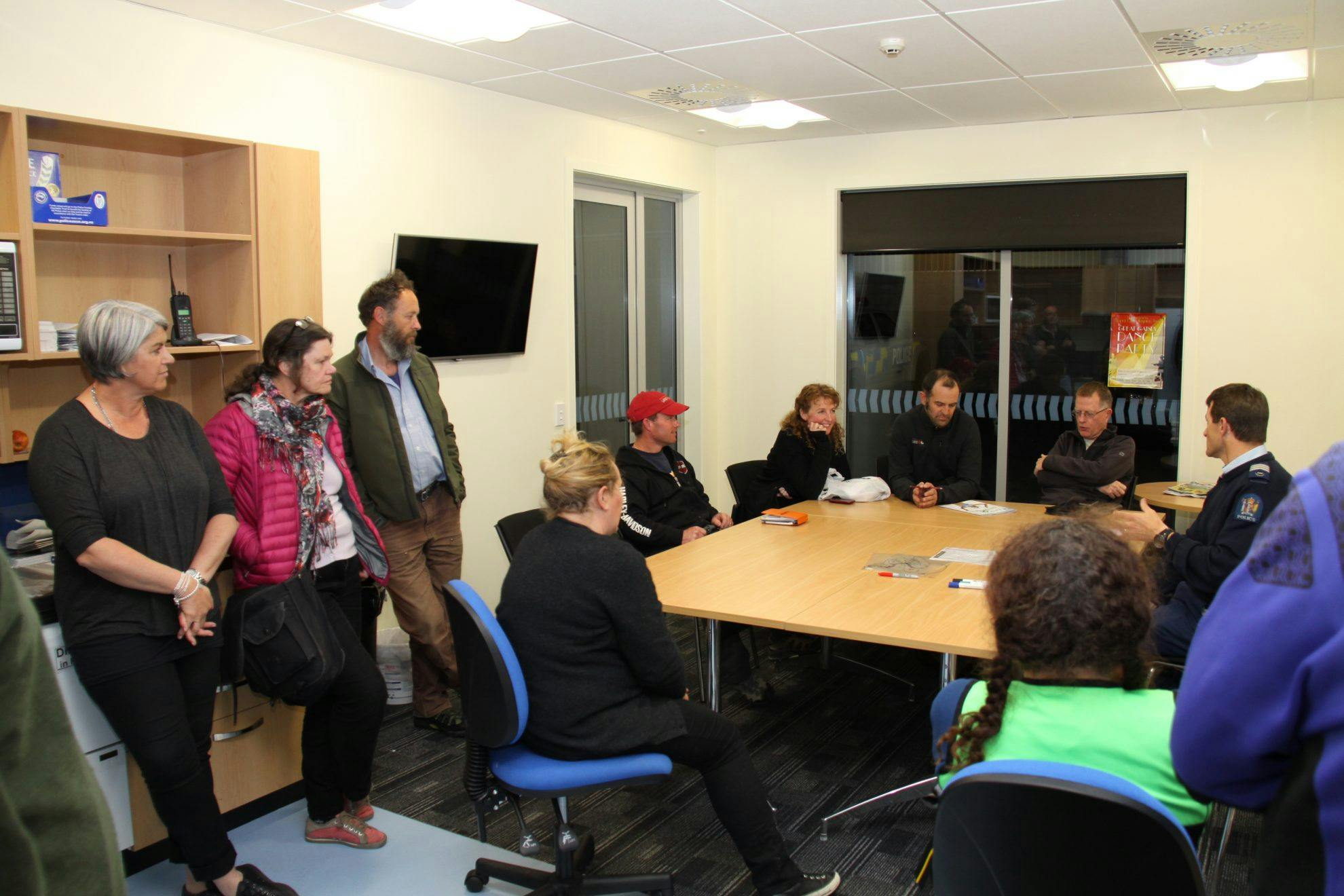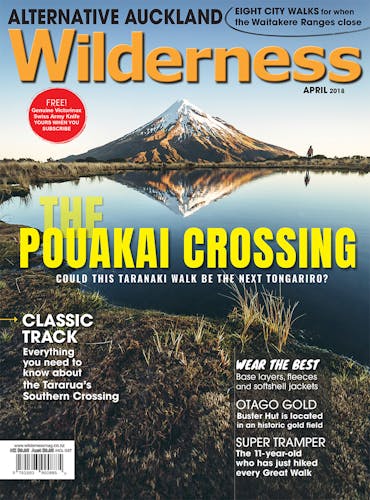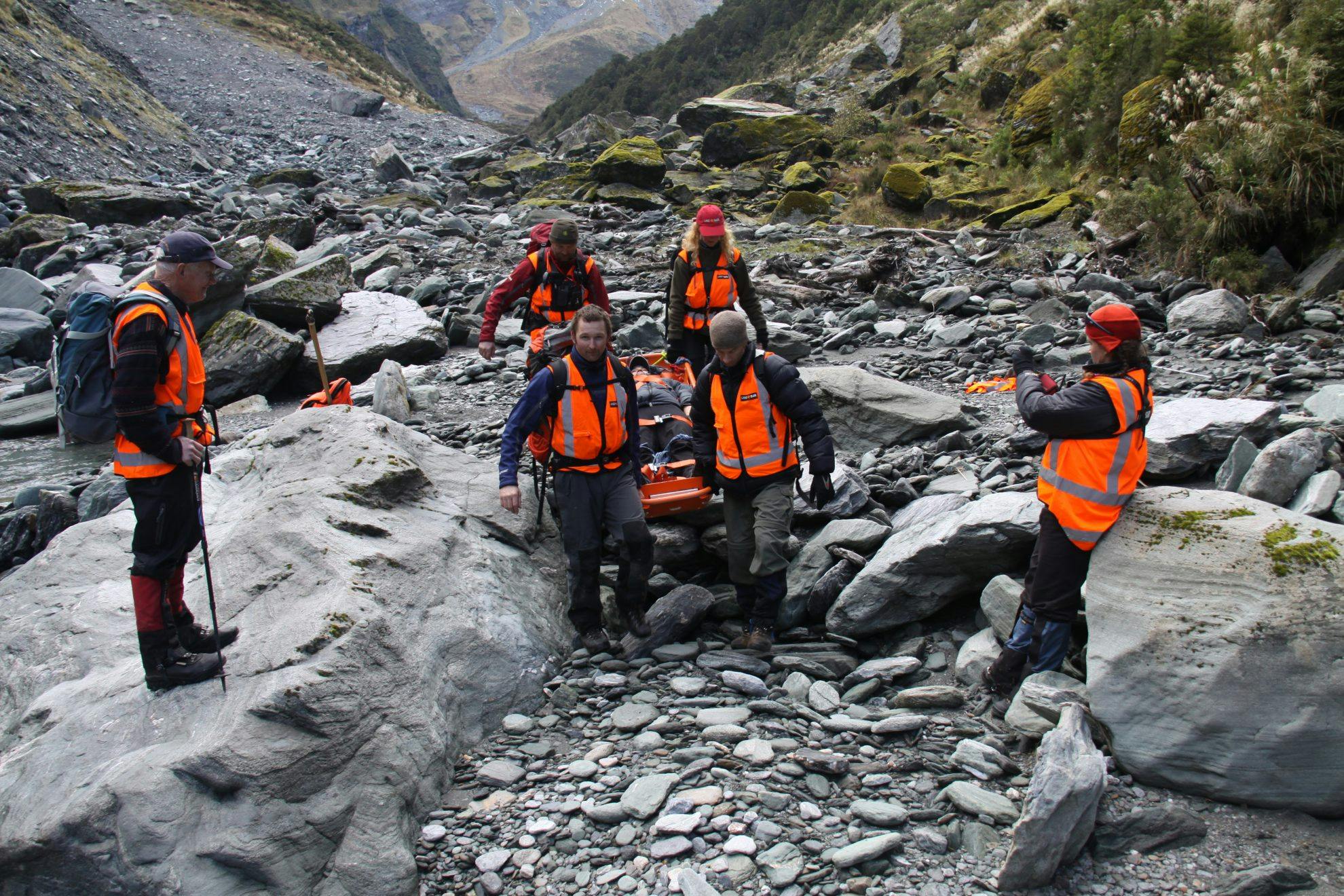Search and rescue volunteers witness some of the most horrific events in the New Zealand wilderness. Sometimes they are left with lasting scars. George Driver investigates how they cope with the psychological strain of the work.
On a sunny morning, sitting at his home in Fox township, Allan Uren was recovering from an arduous week. He had been part of a lengthy search and rescue operation, looking for an acquaintance who had been missing for 10 days near Arthur’s Pass. The operation had ended in success, his friend had been found when all hope seemed lost. But it left Uren mentally and emotionally drained, so he took the day off from his painting and decorating business.
Then another call came in. There had been an avalanche on Mt Tasman. Some climbers had been hit. Uren snapped back into action, headed to the Fox SAR centre and was soon helicoptered to Plateau Hut, perched on the edge of Grand Plateau icefield, beneath the south-eastern face of Mt Tasman.
“Everyone who knows the mountains gets super spooked by the ‘big A’,” Uren says. “When you get a call like that, you know you’re usually dealing with a body recovery.”
At the hut, Uren says it was like a war zone.
“There were lots of helicopters flying back and forth. Everything seemed calm, but the spectre of death was all over the place. People were being pulled out; dead, alive and badly injured.”
Uren stayed at the hut, monitoring the survivors as they waited for paramedics to arrive from Christchurch.
“I was monitoring this guy who was really banged up. He had fallen a long way, his face was severely swollen and he was unconscious – I didn’t think to ask his name. He was really crook.
“After what seemed like hours, he got an evac. But he died on the way out.”
Then a fellow SAR member told him the victim was Wanaka guide Dave Hiddleston. Uren was shocked. Hiddleston was his friend, but he was so badly injured he hadn’t recognised him.
“I immediately lost it and broke down crying,” he says.
Shortly after, another body was pulled from the avalanche. It was Paul Scaife, another member of the Wanaka climbing community and another friend of Uren’s.
“I just howled,” says Uren.
Four people died in the avalanche on New Year’s Eve, 2003, after a party of six climbers on a guided expedition were swept away, making it one of New Zealand’s worst alpine disasters.
On average, 13 people die each year while tramping, climbing or hunting. For those who try to save them, or recover the bodies, it’s all part of the job. But, squeezed in between work, family and everyday life, these traumatic events can leave lasting scars. For a significant number of SAR volunteers, it can turn into a living nightmare.
Post-traumatic stress disorder, or PTSD, arises when a person is unable to mentally process a traumatic event they’ve experienced. The disorder is diagnosed by a number of symptoms, the most well-known is the intensive flashbacks where sufferers essentially relive the traumatic experience, often without warning, again and again.
“It’s completely debilitating,” says trauma psychologist Kristen Hamling, who is completing a PhD on how emergency staff respond to trauma.
“If you don’t get a chance to talk about how you are feeling, the memory of an event can get locked in the brain, which means it doesn’t get processed and stored away properly,” Hamling says. If untreated, those memories will keep trying to break out, haunting a person.
“The memory is as vivid and acute as the day it happened,” she says. “It’s like it’s happening all over again – you’re looking at it, smelling it, seeing it.”

Allan Uren has been a SAR volunteer for 15 years and says he has come to accept getting flashbacks from intense operations. Photo: Jaz Morris
Perhaps unsurprisingly, PTSD often goes hand-in-hand with substance abuse and addiction, as people try to dull the senses to make the experience bearable.
Treatment involves getting the person to process the traumatic memory by talking through it, writing about it, drawing about it – anything to get the memory out.
“Sometimes it’s a remarkable success; other times it is far more difficult to treat. It’s in their bones, and for a small proportion of people it’s about learning to live with it,” Hamling says.
After the Mt Tasman avalanche, Uren says he was upset, but able to cope, which he attributes to being able to express his emotions and process the experience. For him, crying is the best medicine.
“Afterwards, [the SAR team] had a debrief with a psychologist,” Uren recalls. “One of the rescuers from the Mt Cook team asked ‘what was it with Allan?’ When I cry I don’t hold back – it’s like a freaky wailing – I think some people were really shocked because the culture was to hold it in, whatever grief you’ve got, but for me, it really helped.
“I do still have flashbacks. When I think about it, I see Dave’s face, but I don’t have problems with it because I was able to get my emotions out.”
For almost every big SAR operation, Uren says there is a vivid image that sticks with him.
“That’s one of the biggest things people often don’t expect. I can picture certain images in great detail and I can never erase them. But it doesn’t bother me.
“If you try to block those things out it will make you sick. For me, if I can make peace with those pictures, then they are just pictures. They don’t hurt me.”
But he says he knows of many others who have had great difficulty coping with the mental struggle of repeated rescue operations.
“I definitely know people who continue to suffer.”
In first responders, research has suggested 10 to 20 per cent can be impacted by PTSD.
Hamling says every person reacts differently. Some can regularly deal with traumatic events for years and show no symptoms, others can experience one incident and develop PTSD.
She says certain factors increase the risks of PTSD, such as when a rescuer can relate to the person they are rescuing, if they look like a friend or family member, or are the same age and gender. It’s worse if the rescuer knows the person they are rescuing, as Uren experienced.
Research has found that rates of PTSD are generally higher among volunteers dealing with trauma. Hamling says often volunteers work in small communities, so the chance of being involved in a rescue that involves someone they know is higher, increasing the risk of PTSD.
“If your leg was falling off you wouldn’t feel weak for going to the doctor.
It’s the same with your brain, but because people can’t see it, they attribute
the injury to themselves.”
– Kristen Hamling
Volunteers also receive less training to deal with the psychological risks of the work compared with their professional counterparts and have to be on call, juggling rescues with the demands of a day job.
“After a call-out, they are expected to go back to work,” Hamling says. “When they come back people don’t know what they’ve been through and that can be tough. We know having a sense of camaraderie amongst other searchers is a big factor in reducing trauma.”
Given the risks, what can search and rescue staff do to prevent getting PTSD?
Hamling says the most important things are awareness of the signs, creating a culture where it’s OK to talk through those experiences, and ensuring volunteers have access to a psychologist.
“You need to train people to understand what psychological trauma is, what it looks like, how you can protect yourself, what the risk factors are, and what to do about it.”
One of the biggest barriers is the stigma of getting help and opening up. That means changing the macho, harden-up culture that pervades parts of New Zealand.
“It drives me nuts,” Hamling says. “If your leg was falling off you wouldn’t feel weak for going to the doctor. It’s the same with your brain, but because people can’t see it, they attribute the injury to themselves.”
Hamling says research has found rescuers can also fear opening up as they believe if they show they are affected by a traumatic rescue, they might not be called up for the next one.
So what measures have been put in place to support the mental health of search and rescue volunteers?
LandSAR lower North Island group support officer Peter Zimmer says police support services are available to search and rescue volunteers following an operation.
“Any SAR operation is a police operation, hence we come under their welfare system for any treatment,” Zimmer says.
That includes having a trained counsellor available. He says there is a growing awareness of the psychological risks of search and rescue.
“You can’t expect to deal with horrible jobs and not be affected by them. It’s a natural consequence of the job you are doing if you’re dealing with a dead person or a vulnerable person.”

Discussing an operation and debriefing those involved can help prevent PTSD from developing. Photo: Aoraki/Mt Cook Search and Rescue
Emotions, like survivor guilt can be common after a rescue operation. Zimmer says it’s important for volunteers to understand that it’s a normal reaction and those feelings are discussed during a debrief after the operation.
“Some jobs take longer to process than others and it’s important to realise that there is a cumulative effect. If you don’t deal with those sorts of things, they can build up.
“When it becomes a problem is if the flashbacks or the ‘what-ifs’ don’t go away. That’s when you need further counselling.”
But Uren is critical of the police’s approach and says there needs to be dedicated training and support for search and rescue volunteers.
“To defer to the police is totally ludicrous,” Uren says. “We aren’t trained like police, we operate differently and deal with different things. That model is just wrong. LandSAR should be more responsible and be the leading charge in dealing with trauma.”
Uren, now a member of WanakaSAR, has arranged for a psychologist to talk to the team at the start of each season and to be available to talk with volunteers at any time throughout the year.
“We’ve got to be proactive and build resilience into volunteers so we’re less likely to have to fix things down the track.”
Zimmer says LandSAR is also looking to develop its own support programme, in addition to the services provided by police, but the details still haven’t been finalised.
“In the future, LandSAR wants to develop a peer support system incorporating all available information from other emergency service organisations,” Zimmer says.
One of the SAR teams that lead in this area is based at Aoraki/Mt Cook, one of the most active search and rescue teams in the country. The SAR team is New Zealand’s only professional alpine rescue team and it is independent of LandSAR, coming under DOC’s jurisdiction.
“We’ve had staff members that have had PTSD in the past and it would be the same for a lot of SAR teams,” SAR team leader Andrew Tindall says. “We put a lot of energy and focus on it and have tried to create a culture where it’s not macho, where you don’t just suck it up and live with it. Now we sit down, talk about it and go through our emotions. We make it clear that there’s no big deal about it.
“It doesn’t take much for people to slip into full-blown PTSD.”
Especially at Aoraki. In the 2016-17 summer, the team dealt with eight fatalities, including a helicopter crash, a glider crash, and climbing accidents.
Prevention starts even before SAR workers are hired, with a strict vetting process. Prospective employees must undergo a psychological assessment and only those who have experience dealing with trauma are hired. A psychologist then comes to talk with the entire team at the end of each season, and talking to a psychologist is mandatory after intensive operations.
“We make it really clear to the staff that if they aren’t coping or are under stress, then it’s totally fine to get help.
“It’s just as important as the other training we do. You can have all the skills in the world, but if your mental health isn’t there, it’s going to affect everything.”
Awareness is also being drilled into the next generation of SAR volunteers.
Steve Campbell has been managing YouthSAR for the past decade, a programme which trains high school students in search and rescue based in Tauranga. Mental health is a core component of the course, including how to recognise PTSD signs in others and where to go for help.
“It’s essential,” Campbell says. “We are teaching the students to accept if they aren’t coping and to get help, and to put their hands up to identify it in others. We also teach them leadership and management skills, to mitigate trauma during a search operation.”
But how do you mitigate the experience of dealing with trauma during an operation?
Campbell was a policeman for 14 years and was involved in police search and rescue for a decade, including working as part of a team extracting people from the CTV building after it collapsed in the 2011 Christchurch earthquake, killing 115 people. He says seeing the approach of the UK urban search and rescue team was inspirational, showing how to put the psychological wellbeing of the searchers first.
“Before they went onto the site there was a full psych briefing about what they could expect and the team leader was always focused on the wellbeing of the team. At any stage, if a team member wasn’t coping, they would move away from the scene and deal with the trauma issue until they were happy to go back.
“We teach our students the same.”
Campbell says while things have improved, he believes there could be greater emphasis and a more coordinated, SAR-focused approach to preventing and treating PTSD.
“It needs to be an integral part of disaster response and search and rescue training. We still have a long way to go.”








